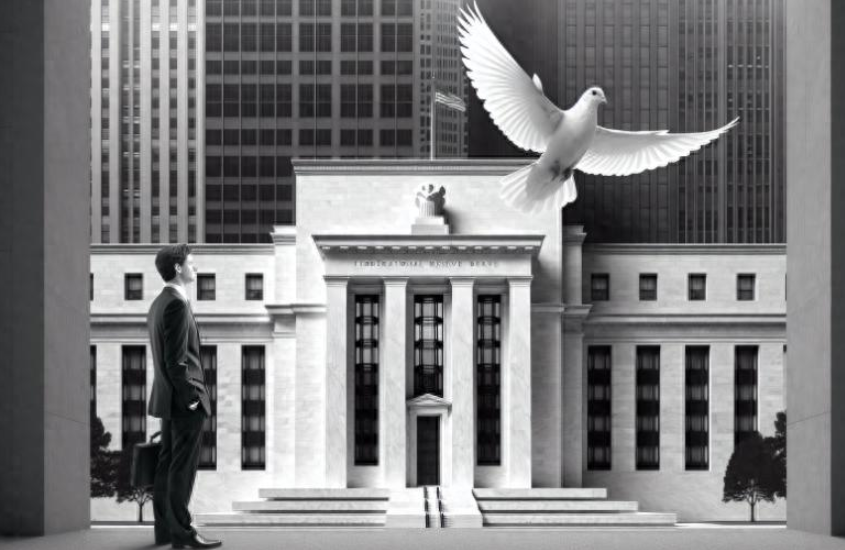The economic landscape is a complex and ever-shifting floor where decisions made by leaders in the financial realm reverberate throughout society. Recently, the Federal Reserve has been enveloped in a nuanced dialogue regarding interest rates, employment trends, and inflation dynamics. As market players seek reassurance in the wake of economic fluctuations, key figures within the Fed offer varying perspectives that reflect their analyses of prevailing conditions.
Among the prominent voices is Chicago Fed President Austan Goolsbee, who has expressed a conviction that the labor market is currently stabilizing around a level he deems to be full employment. His assertion comes on the heels of a robust employment report revealing that the U.S. economy added 256,000 jobs in the previous month, marking the highest gain since March of last year, alongside an unexpected drop in the unemployment rate to 4.1%. Goolsbee posits that such figures do not signify an overheating economy, a takeaway that could influence forthcoming monetary policy decisions.
In a recent interview, Goolsbee underlined his belief that, provided inflation remains in check, interest rates could see a significant decrease over the next 12 to 18 months. He clearly articulated that "the pace of cuts will depend on economic conditions," suggesting a tailored approach to interest rate adjustments rather than a blanket strategy.
Amidst these bullish sentiments, tensions within the Fed are palpable. Some members emphasize a more cautious approach to rate adjustments. In a stark contrast to Goolsbee’s assessment, St. Louis Fed President Jim Bullard highlighted the complexities of the current economic outlook compared to when the Fed initially embarked on its rate-cutting cycle four months prior. Bullard characterized last month's rate reduction as a "tough call," suggesting that the economic environment presents new challenges, particularly with inflation hovering around levels he perceives as risk-laden.
While Bullard acknowledges earlier support for bolder rate cuts—he was in favor of a 50 basis point reduction last September—he has recently recalibrated his expectations. "Since last September, the landscape has shifted, with strong economic data emerging and inflation running above forecasts," he noted, reflecting a cautious transition shaped by a reassessment of risk.
With rising concerns over persistent inflation, Bullard advocates for a more gradual approach to further rate cuts. He emphasizes that the Federal Reserve's mandate remains staunchly focused on regulating inflation, suggesting that any future cuts should be methodical rather than aggressive.
The discussions surrounding interest rates frequently pivot on broader economic indicators, with recent data suggesting that inflation has begun to stabilize. Goolsbee remarked on the apparent progress made on this front, attributing elevated inflation rates primarily to price pressures expected to resurge by early 2024. This evolving narrative encapsulates the ongoing tension between the ambition for lower rates and the necessity of maintaining price stability.
Yet, despite the optimism from some quarters, apprehensions linger regarding consumer and business expectations of future inflation. Bullard voiced concerns that heightened expectations could potentially manifest into self-fulfilling prophecies, aggravating the inflationary landscape over time. "This economy is not a simple one—it is over a $30 trillion economy; it’s complex and intricate," Bullard articulated, underscoring the challenges of predicting the nuances of an economy influenced by factors both domestic and international.
The increasing rise in long-term rates since the commencement of interest rate reductions, particularly the significant uptick in the 10-year Treasury yields nearing a one-year high, adds another layer of complexity. Bullard believes that financial conditions, which encompass borrowing costs and asset valuations, sustain economic activity despite these rising yields.

According to Bullard, the uptick in long-term rates primarily stems from rising "real" rates, which do not directly indicate apprehensions around inflation but rather reflect an optimistic outlook for economic growth. He elucidated that while inflation expectations have climbed slightly—acknowledged by both supporters and detractors of current policies—the majority of the yield increase is attributable to augmented real interest rates driven by investors seeking higher returns due to increased perceived risks.
This notion of risk aversion ties into the evolving economic narrative; many economists caution against simplifying the interpretation of rising rates as merely a signal of inflating expectations. They argue that, in fact, these adjustments may embody a more nuanced reading of the economic terrain, suggesting larger uncertainties and expectations of an unpredictable future.
To distill these discussions into actionable insights, one could argue that the path ahead remains fraught with uncertainties. The Fed must navigate through an intricate web of data and varying opinions, always with an eye toward broader impacts on the economy and the everyday lives of individuals. As the global financial system is intricately interwoven, reactions to policy changes reverberate well beyond U.S. borders, affecting international markets and economies worldwide.
In conclusion, as stakeholders observe every shift in language, policy, and data, the stakes are higher than ever. The ongoing discourse within the Federal Reserve encapsulates the delicate balance they must maintain between promoting economic growth through lower rates and safeguarding the economy from the specter of inflation. Moving forward, it will be critical for the Fed to communicate its strategies while remaining responsive to emerging economic signals, ensuring stability in a dynamic environment.